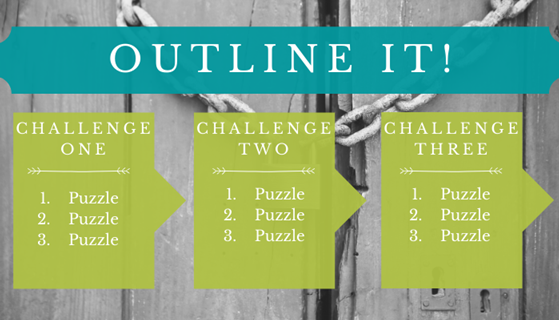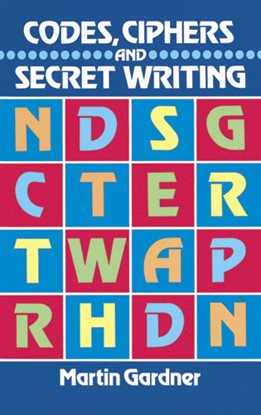
You do not need to spend money, or even leave home, to enjoy an escape room. Below, you will find a basic guide to creating your own escape room experience.
Write Your Story
Escape rooms usually begin with a story explaining where participants are and why they need to get out. The storyline will determine the theme of the escape room: pirate ship, laboratory, spaceship, etc. You can build a storyline around props or items you already have at home, or, if you are artistically inclined, you can make props of your own. Of course, if you do not have any items that go together thematically, you can always build an escape room around a simple premise: You have been stuck at home with your family members for weeks and you need to get out!
Plan Your Challenges
You want your escape room to be challenging enough that it will keep players’ interest, but not so long or difficult that they simply give up. For your first escape room, try starting with three main challenges that need to be solved. For example, you might have Locked Box 1, Locked Box 2, and Locked Door (the final puzzle). Under each main challenge will be a number of sub-puzzles. These should contain a variety of easy to difficult problems for players to solve.
Your escape room should ideally take players 30-60 minutes to solve. However, when creating your first escape room, you may simply have to guess at how long it will take the players to escape. After you have created your first room and done a run-through, you will have a better idea of what areas will stump players and how much time players will usually spend on various types of puzzles.
Once you have decided on your three main challenges, write them down on a piece of paper to start an outline. You will need to plan how each puzzle solution leads to another and the best way to keep track is by writing it out.

Types of Locks
Your three main challenges will often require players to unlock a container or a door to uncover a new clue or to enter a previously inaccessible part of the room. If you have done an escape room before, you know that there are several types of locks that are typically used: numerical locks, word locks, and directional (arrow) locks. You may have also seen locks that open with a color combination or even padlocks that require players to find the matching key. You can use any type of lock you have on hand. However, since you are playing at home with your family members, you can also simply post a note that a box or door is “locked” until they tell you the combination and you approve it. This way, you are not limited to whatever locks you manage to find in your home.
Types of Puzzles
You will want to use a variety of puzzles to lead participants to the solution to each of your main puzzles. Below is a list of some common puzzles that you may be able to recreate at home.
- Hidden Objects
The most basic type of puzzle simply requires players to look around the room for hidden objects or clues. For example, if you want players to solve a code, you could write the code on a piece of paper and then cut the paper into several pieces. Then, scatter the pieces around the room: one taped under a chair, one inside a book, one underneath a coffee mug, and one in a flower vase.
- Codes and Ciphers
Technically, a cipher is a system in which letters are replaced with another symbol or letter, while a code is a system in which entire words are replaced by a symbol or letter. There are many types of ciphers and codes, which you can research online. You probably want to choose one that is fairly easy to solve if you will have younger participants. Older participants, or players who have solved many escape rooms, might enjoy a more challenging code or cipher.
Easy Codes:
- Morse Code: Each letter is substituted with a series of dashes and dots. You can find the full alphabet online.
- Pigpen: Each letter is substituted with a symbol. You can find examples online.
- Substitute letters for numbers: Assign “A” the value of “1,” “B” the value of “2” and so on
- Backwards alphabet: Work backwards, substituting “Z” for “A,” “Y” for “B” and so on.
More Challenging Codes:
- Substitute letters for other letters: Randomly assign each letter another letter as a substitute. You can hide a key in the room to make this even easier. For example, you could make a cipher key with the alphabet written in order on an outside circle. On an inside circle, attached with a paper fastener, write a scrambled alphabet. Then, somewhere in the room, hide the key, such as “A = H”. This lets players know they should spin the inside circle so “H” is underneath the letter “A.” Players then use the key to decipher your coded message.
- Caesar Shift: A Caesar shift is a type of substitution code in which each letter is replaced by another letter a specific number of places either to the left or to the right. You begin by writing out the entire alphabet in order. Underneath, you write the shifted alphabet. So, if you are shifting four to the right, you would count four places to the right of A. So begin with “E” under “A” and continue the alphabet in order from there.

Riddles
Riddles are puzzles written in a purposefully vague manner so players must use their wits to discover the hidden meaning. You can use well-known riddles as clues, or you can write your own, relying on wordplay to guide participants to the answer.
Logic Puzzles
Logic puzzles must be solved using reasoning. For example, sudoku requires players to deduce which numbers can fit in a certain row, column, or square using logic and the process of elimination. In an escape room, you could ask players to use logic to arrange items in a certain way to determine the necessary object.
Patterns
Hide the answer to a puzzle in plain sight with patterns. For example, if you have a color lock, you could create posters where text or images repeat in the order that will open the lock.
Invisible Ink
If you have a pen that writes with invisible ink, you leave a hidden message in the room. Then, leave the pen where players will find it so they can use the attached UV light to search. For a harder challenge, write the hidden message in code!
A Few More Puzzle Hints
- The escape room should be a fully self-contained game. All knowledge needed to escape the room should be common knowledge, or it should be provided in the room itself. Players generally should not have to look up information on their phones in order to solve the room.
- In the same vein, you should not expect players to possess specialized skills in order to escape the room. You should generally avoid including math problems, for example, unless you are making an educational escape room to assess a student’s mastery of a subject.
Sample Escape Room
- Once you have your story, your three main challenges and your sub-puzzles selected, you can work to combine them into a full escape room. Each puzzle should naturally lead into another so players will not get stuck too long on a particular clue. If you are unsure how to link your puzzles, or just want an example that you can use as a starting point for your own room, you can check out the sample room below. You can use this as your very first escape room or you can modify it to suit your particular room, props, and needs.
Three Main Challenges: Locked Box 1, Locked Box 2, Locked Door
First Challenge: Unlock Box One
- Hidden Object: Pieces of a coded message are hidden around the room. Players find and assemble.
- Cipher: Players use backwards alphabet to decode the message.
- Riddle: Decoded message asks players to “Weigh their chances carefully.” Players notice a kitchen scale that could be used to weigh something. The border of the paper has a pattern of colored dots on it.
- Pattern: Players notice there are objects around the room with colored dots (stickers) on them. The dotted border pattern goes red, red, blue. Players grab the two objects with red stickers and one with a blue sticker and weigh them together on the scale.
- Numerical Lock: The weight of the objects is the code for a four-digit number lock on box one. Inside the box are some puzzle pieces.
Second Challenge: Unlock Box Two
- Hidden Object: An invisible ink pen is hidden in the room. Players find it.
- Invisible Ink: By shining the UV light on the pen around the room, players find four book titles written in invisible ink. Each has a number, the title, and a page number. For example, one might read “1) Treasure Island p. 30.” Players gather all the books together and open to the mentioned pages.
- Invisible Ink, Part 2: Players see nothing in the books so they try shining the UV light on the pages. Each book page mentioned has one of the four cardinal directions (north, south, east, west) underlined in invisible ink.
- Directional Lock: Players see there is a locked box with a directional lock. They put the four book titles in order. Then they set the arrows on the locks so they are pointing north, south, east, or west, as mentioned in the books. The box opens. Inside are more puzzle pieces.
Final Challenge: Unlock the Door and Escape the Room
- Puzzle Pieces: Players put the puzzle pieces they found together.
- Logic Puzzle: On the back of the assembled puzzle is a sudoku with some of the boxes circled in different colors. Players solve the sudoku puzzle to find five circled numbers. The only problem is, they do not know which order the numbers go in.
- Image Association: The front of the puzzle depicts an ocean scene. There are ocean posters on the wall. Players look behind them to discover that on the back each poster has a number, one through five, circled in one of the same five colors used on the sudoku.
- Numerical Lock: Players use the colored circles to put the numbers in order on the five-digit numerical lock located on the escape door. They have solved the room!
Running the Escape Room
Before letting players in your new escape room, tell them the rules. An important announcement, for example, is usually that the door out is not actually locked. You will want to keep it open in case of a fire or other emergency. Let your players know this! Also tell them if there are any objects you do not want them to touch–the ceiling, electrical outlets, etc. You could even put a sticker on anything in the room that is actually part of the game, so players know not to touch anything else. But it is also good to remind them if you do not want them taking apart certain objects, prying things off the walls, and so forth.
Let players know how much time they have to solve the room, and if they are allowed to ask you for hints and how many. Tell them that you will periodically announce how much time they have left.
If the players have no more questions, provide them with paper and pencils to take notes and solve puzzles. Then, read them the story that explains where they are and why they need to escape the room. Finally, start the timer and let the fun begin!
Resources
Looking for more information on puzzles, codes, and game-making? Check out our e-book collection on Hoopla. The best part is, there are no wait lists!
Codes, Ciphers, and Secret Writing by Martin Gardner
Games with Codes and Ciphers by Norvin Pallas
Codes by Kjartan Poskitt, Ian Baker
Game Logic by Angie Smibert, Lena Chandhok









